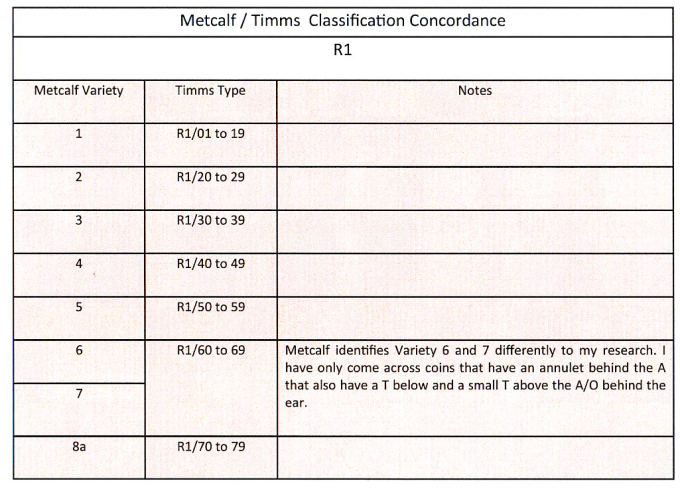R1 Sceatta Introduction
R1 Type R1/1 to R1/8a Comparison
These notes compare the various Metcalf “Variety 1” to “Variety 8a” R1 Sceatta. In his work “Runic Sceattas Reading EPA, Types R1 and R2” (2007), Metcalf classifies Sceatta with the horizontal barred A behind the apex pointing Towards the head on the obverse as a “Type R1”.
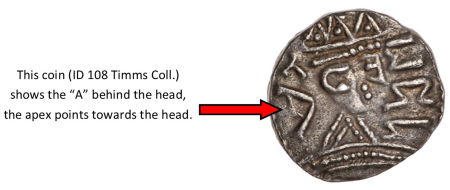
Some numismatists identify a “Transitional Phase” between the R1 and R2 classifications. This phase would certainly include Metcalf’s variety 8b and probably varieties 9, 10 and 11. Varieties 8b to 11 feature the “IT۸TI” each side of the standard on the reverse. I favour a more distinct delineation of variety 1 to 8a = R1, and 8b onwards = R2. Variety 12 (R2) onwards with the “A” apex pointing away from the head I have researched in “Series R Sceatta Research R2 Type Classification” (2020) Timms.
After studying the iconography of the “R1” obverse and reverse from photographic images in the EMC database of the Fitzwilliam Museum Cambridge 2022 (and images in MEC 8 Naismith 2017), in the SCBI 63 2013 of the British Museum, the past collection of Dr T Abramson 2019, Italo Vecchi Subjack Sale 1998, Dr Greg Stevens’ coin and my own collection 2022.
I have concluded that the Obverse of an “R1” coin should consist of:-
- A right facing radiate bust, a crescent shaped ear with a pellet at each end (pommée), a prominent nose often pointed, a large pellet in the center of the nose representing an eye, one or two large pellets forming the lips and a cheek/jaw bulge shaping the face. The crown of the radiate bust contains a pellet within each of the three triangular points. Most coins have a “crown line” forming the top of the head just be low the actual crown.
- “A” horizontal (as in Metcalf) widely splayed A behind the head, the apex of the A pointing towards the head.
- Characters behind the head consisting at least of one “A”, sometimes one or more “T’s”.
- Runes before the face EPA. It is very unusual to see these characters other than in a Pattée format.
- A beaded, often four lined long neck.
- Often two curved continuous exergual lines either side of a central line of pellets.
The above list is sometimes incomplete due to the strike of the flan being offset. On occasions a beaded border can be seen. Some varieties have annulets visible also. Usually the runes before the head and the characters/symbols behind the head are in Pattée format.
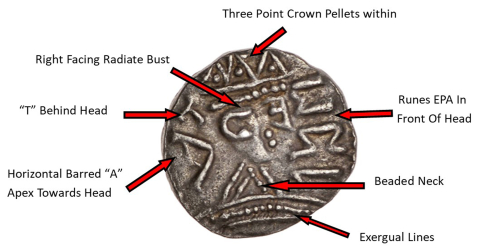
The Reverse of the coin should show:-
- A beaded square standard.
- A central annulet within the standard with two “T’s” above to the left and right of the central annulet, below left and right are vertical lines (these lines are always vertical in the R1). As mentioned above with the runes on the obverse it is very unusual to see characters and symbols in other than a Pattée format
- Above the standard is a Tufa/Fantail/Spray, most examples contain three pellets within, occasionally there is only one.
- There is a horizontal chevron to each side of the standard, they point away from the standard.
- There are four lines protruding outwards at 45° from each corner of the standard. Sometimes the two top lines have additional downward sloping horns (as in the C1 series Sceatta).
- There is a large cross attached to the beading of the bottom line of the standard.
As with the obverse sometimes a beaded border is visible. It is usual to see the four corner lines, the two side chevrons, the bottom cross and the characters within in the standard in Pattée format.
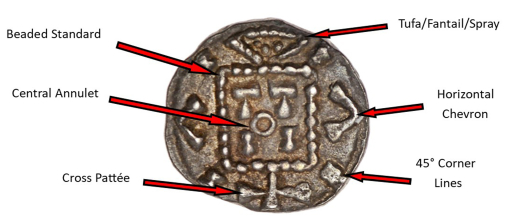
The above coin has the iconography associated with a what I have called a “Typical” reverse.
Diagrams similar to those below are used throughout this research.
They vary slightly from classification to classification.
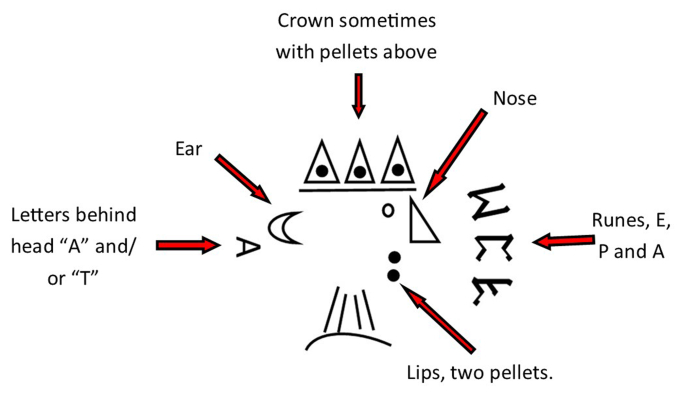
Diagrams are used to show various aspects of the Sceatta’s iconography. All coins have the runes E, P and A before the head. The top of the “E” rune (looking like a capital M) points inwards. The middle rune (a P) has its top pointing outwards. The bottom rune (looking like a back-to-front F) is an “A” cut in a retrograde way. On one coin there is a “T” above the runes. Roman T’s and A’s appear on R Series Sceatta. On other R Series Sceatta runes appear in different combinations of IN/OUT and back-to-front (Retrograde).
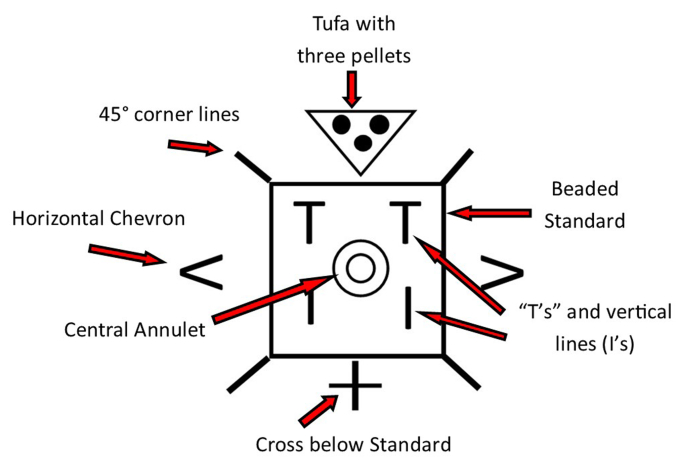
On occasions there may be a pellet within the central annulet of the beaded standard. Sometimes a beaded border may be seen on either the obverse and/or the reverse. An R1 Sceat would measure approximately 12mm in diameter and weigh between 0.9g and 1.2g.The symbols within the standard are often refered to as "TTOII"
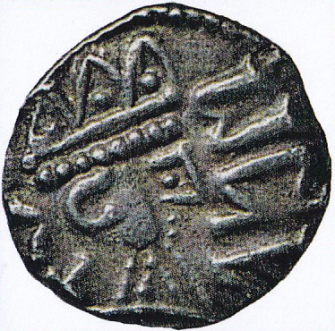
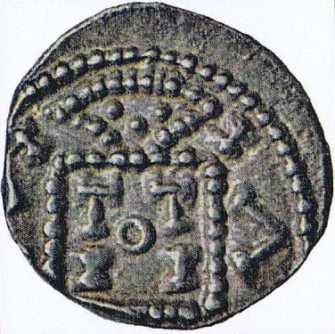
Image of coin ID 47 by permission Dr Greg Stevens
Timms Type R1/32.
